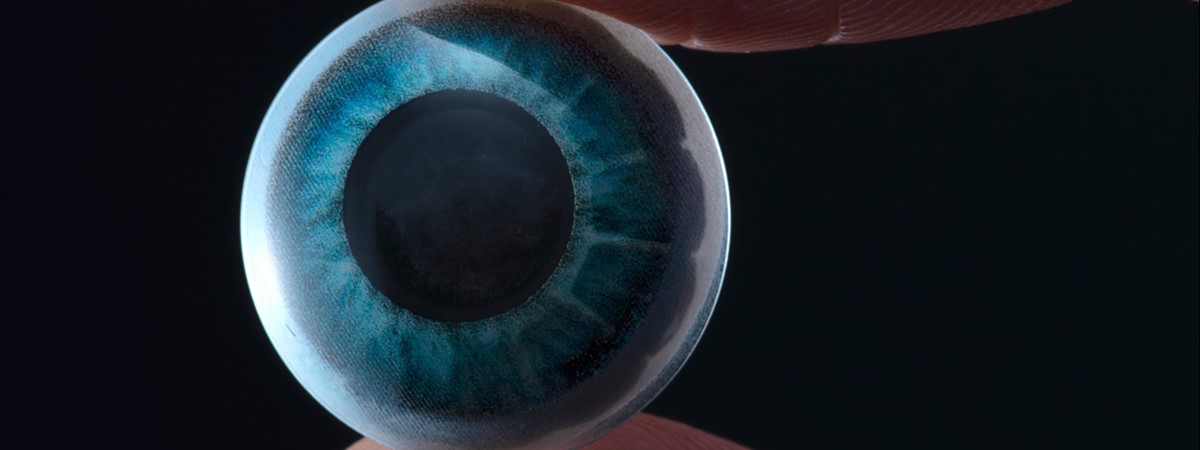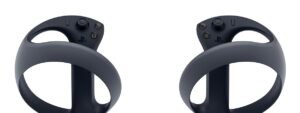
The AR contact lens offers a display with information and notifications. It also allows the user to interact by focusing on certain points and is operated by eye movements. Developed by California-based Mojo Vision, the company has so far raised over $100m (£77m) for the project.
“Mojo has a vision for invisible computing where you have the information you want when you want it and are not bombarded or distracted by data when you don’t,” said chief executive Drew Perkins.
Mojo Vision’s idea is to reduce our reliance on phone and tablet screens by putting it on our eye. This means users who get a message won’t have to pull their phone out of their pocket or bag to read it, but rather look into the corner of their vision to make the message appear and read it then and there.
The company added that the lens is also connected to the internet, meaning users can get almost instant access to information based on their surroundings – for example, the way to the nearest restaurant or supermarket.

The rigid contact lens, which the company has been developing for some 10 years, may also be used to help people with visual impairments by using enhanced image overlays
Image credit: Mojo Vision
During a demonstration, company executives showed how the contact lens could enable users to see a virtual teleprompter, navigation instructions or other interactions that appear floating in the field of vision by projecting a micro-LED display to the retina.
A user, wearing two lenses which may be fitted with a correction prescription, could ‘click’ by concentrating on an icon – to launch a music player, for example – and turn it off by looking away or blinking.
“We want to create a technology that lets you be you, lets you look like you; it doesn’t change your appearance, it doesn’t make you act weird walking down the street,” said Mike Wiemer, co-founder and chief technology officer at Mojo Vision. “It’s very discreet and frankly, substantially, most of the time it doesn’t show you anything.”
By putting an AR display in the lens, the company would be scaling down modern immersive hardware, which often means strapping on neck-straining headsets.
“Today’s AR headsets are too awkward to be worn in social and professional situations and many AR solutions try to create immersive experiences that can clutter reality,” the company said on its website. “That’s why Mojo has pioneered the concept of ‘invisible computing’ – a display that never gets in the way.”
Mojo Lens uses unique, purpose-built microelectronics and the world’s densest microdisplay, which reportedly has a resolution of 14,000 pixels-per-inch. According to Wired, which has tested the device, the prototype lens has an embedded display about the size of a dot from an ink pen.
If the user is looking straight ahead while they’re wearing the lens, they won’t see anything unusual. However, users just need to move their eye to any corner of their range of vision to activate a pop-up screen with icons for notifications, weather calendar and music. They can also expand these icons further to see more details by staring at an arrow next to them.

Fitness example – Keep your eyes on all those grizzly health details (but don’t take your concentration off the road!)
Image credit: Mojo Vision
One suggested use case involves reading a pre-written speech at normal speed as it scrolled down – much like a teleprompter. This means users presenting a conference or delivering a lecture could keep their line of vision directed at their audience without having to constantly move their head down to check their notes.
Mojo said it had no timetable yet for a commercial launch, but has received approval from the US Food and Drug Administration (FDA) as a “breakthrough” device to test the contact lens to help people with visual impairments, such as macular degeneration or retinitis pigmentosa.
“These are people who are underserved by technology today,” said Steve Sinclair, senior vice president of the start-up, which is based in Saratoga, California.
The company added that the contact lens is designed to provide overlays that augment sight for people with “low vision” and may assist in mobility, reading and other functions. It may also have business applications, allowing workers or specialists access to real-time information in their field of vision without a bulky headset.
- 000
- 10
- a
- About
- access
- According
- Act
- added
- administration
- ahead
- All
- Allowing
- allows
- applications
- AR
- audience
- bag
- business
- Business Applications
- Calendar
- california
- Can Get
- case
- certain
- change
- chief
- chief technology officer
- Co-founder
- commercial
- company
- computing
- concentration
- concept
- Conference
- connected
- constantly
- contact
- could
- create
- credit
- data
- delivering
- designed
- details
- developed
- developing
- device
- Display
- Doesn’t
- down
- drug
- embedded
- enable
- example
- executive
- executives
- Expand
- Experiences
- eye
- fda
- fitness
- focusing
- food
- from
- functions
- further
- Hardware
- having
- head
- Health
- help
- How
- However
- HTTPS
- ICON
- idea
- image
- immersive
- information
- instant
- Internet
- IT
- Keep
- launch
- Line
- Look
- looking
- make
- meaning
- means
- mobility
- more
- most
- move
- Music
- Navigation
- next
- normal
- Notes
- Offers
- Officer
- Other
- People
- player
- points
- pop-up
- prescription
- president
- professional
- project
- provide
- range
- Reading
- real-time
- Reality
- received
- reduce
- reliance
- restaurant
- Said
- scaling
- Screen
- Size
- smart
- So
- Social
- Solutions
- some
- speed
- Start-up
- street
- Supporting
- Tablet
- Technology
- test
- The
- the world
- time
- today
- underserved
- unique
- us
- use
- users
- Vice President
- Video
- Virtual
- vision
- walking
- Website
- while
- WHO
- without
- workers
- world
- world’s
- would
- years
- Your
- youtube






